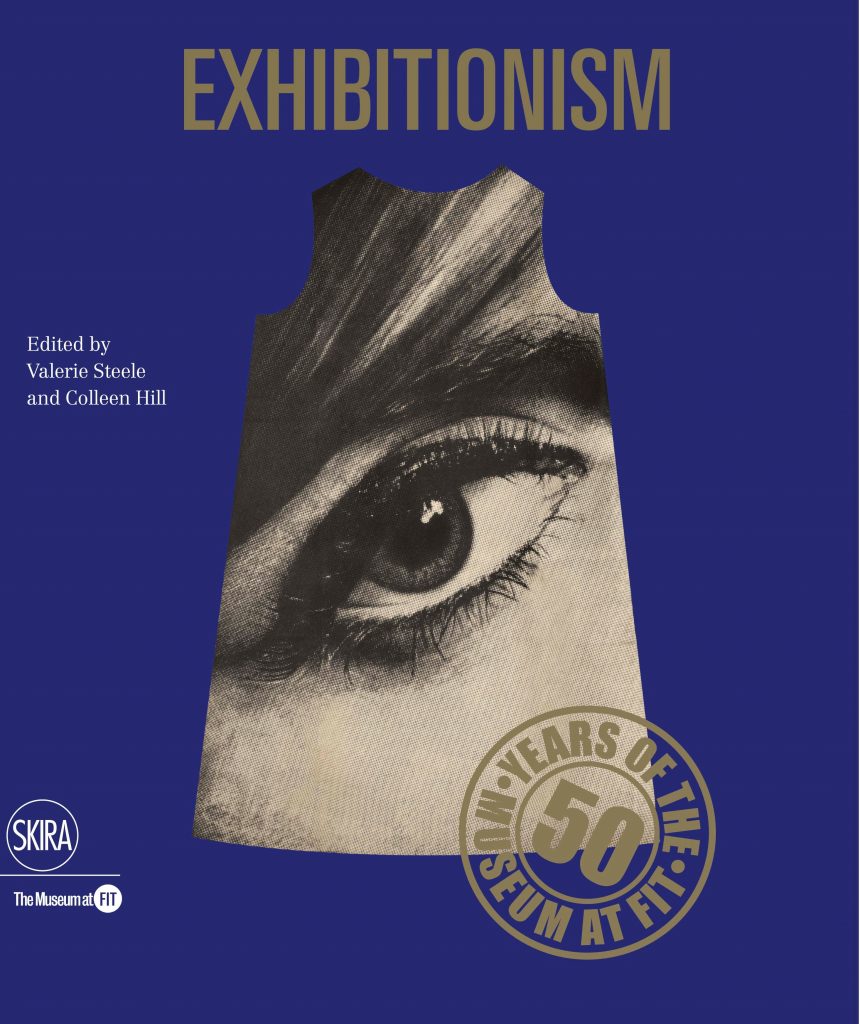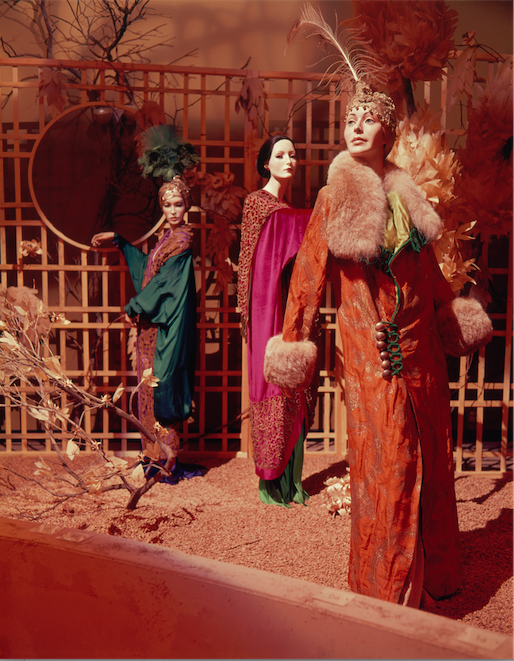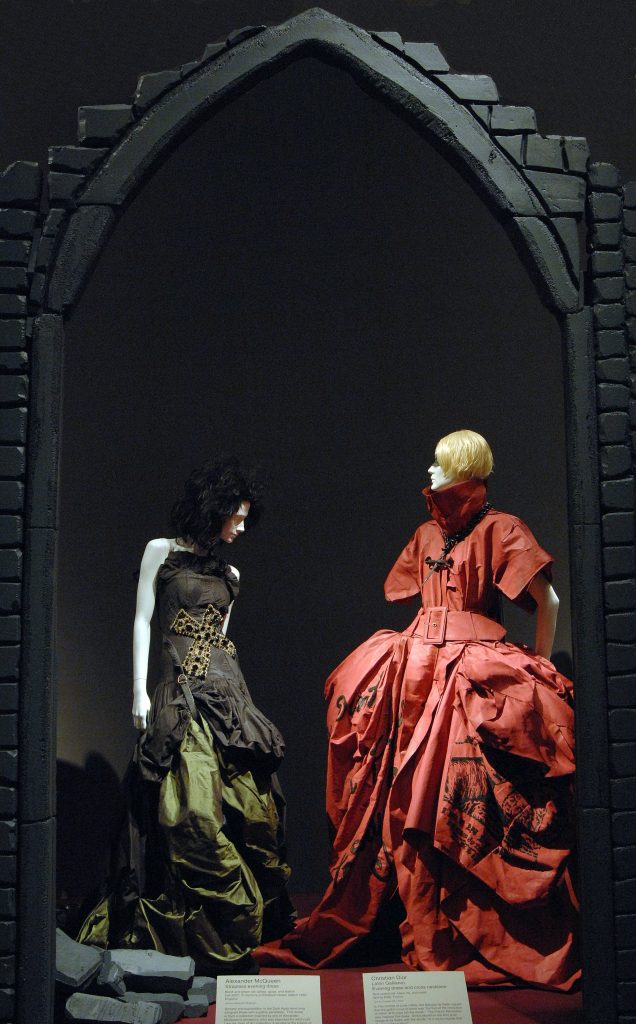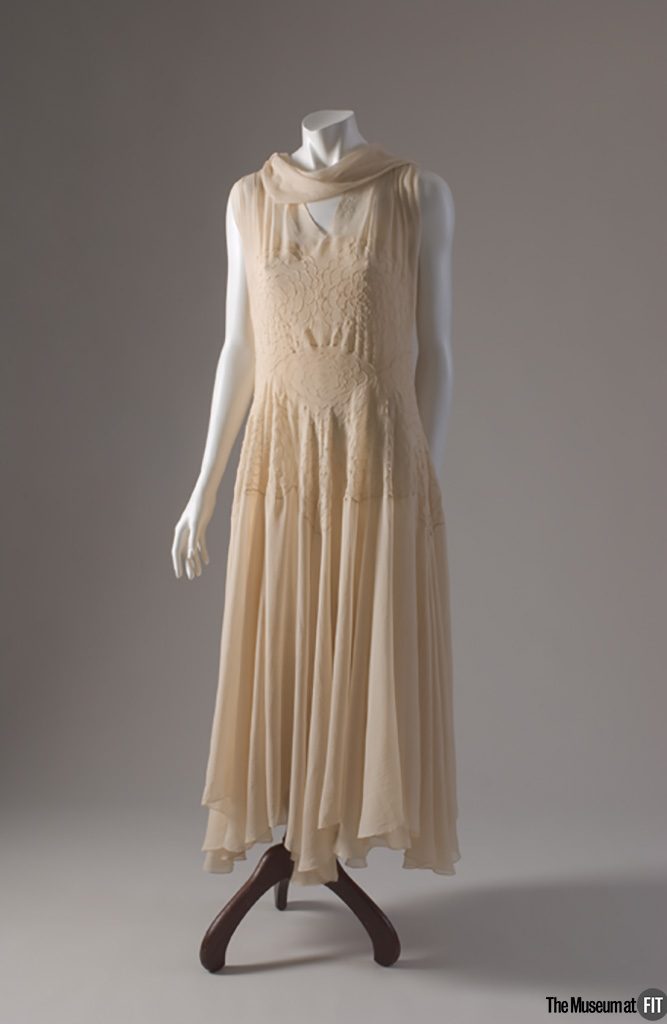Exhibitionism-50 Years of the Museum at FIT

Clearly, at 96 pages this book is not a long read. Even so, size did not curb my enthusiasm. On Page 10 seeing the costumes of MGM costume designer Gilbert Adrian in color for the first time. I became hooked. I had a bit of a swoon seeing the red dress worn by Crawford.
Edited by Valerie Steel and Colleen Hill, the pictorial pages engaged me with brief descriptions and histories of curated exhibits at the museum. The selection covers 33 important exhibitions with background, context, and inspiration. The authors give references for each exhibition.
Paul Poiret Looks

Madame Gres, a one time rival to Chanel, created exquisite looks for film actress Dietrich. Sadly, many today do not recognize the name. The great designer covers 2 pages. I appreciate the images of Gres’ form hugging collections. All designed for the feminine shape. “Sculptural Beaty” is the quote from book. I felt inspired reading through the pages.

Gothic Dark Glamour
Without a doubt, there is something for all fashion lovers; covering topics on Asian Fashion Designs, the influence of Ivy League looks on menswear to Global Fashion Capitals.
Madeleine Vionnet

Long sleeveless evening dress in ivory bias-cut silk georgette shaped through torso with pintucked design of roses; slit neckline, shirred shoulderline with self tie attached at right; flared circle skirt; matching crepe chemise underdress with camisole neck and scalloped hem; couture, with picot edge and hand stitching
Valerie and Coleen made a book that is cosy when it would have been easy to overwhelm. Indeed, Exhibitionism-50 Years of the Museum at FIT fits as a perfect August read while on a terrace. I recommend soaking in a few chapters before the fashion week calendar starts in September.
The Museum at Fashion Institute of Technology celebrates its 50 anniversary this year. Founded in 1969, it continues to be an innovative space for fashion curations.
To order a copy go to Amazon or a local book store.
